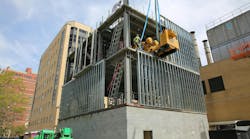If you are using your computerized maintenance management system (CMMS) as just a work order system, you’re not tapping its true potential. How many of the following have you implemented with your CMMS? (all are possible)
- Eliminate paper PM forms. Use mobile maintenance apps to send maintenance data directly to the CMMS.
- Group PMs and work orders that are related. Taking a machine down once to perform all the PMs that are coming due and all the work orders that are still open will save time, money, and lost production compared to taking it down multiple times. You also minimize mobilization and cleanup costs.
- End spreadsheet madness. Instead of entering data into spreadsheets and then manipulating them to provide some sort of report, use the reporting tools of your CMMS. Do you want to know which downtime causes cost the most money? Which are most frequent? Which are increasing in frequency? The CMMS gives you an easy way to generate such reports.
- End endless repairs. At some point, it’s better to replace than repair a machine. The CMMS can give insight into where that point is.




